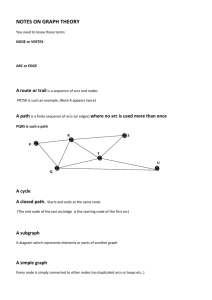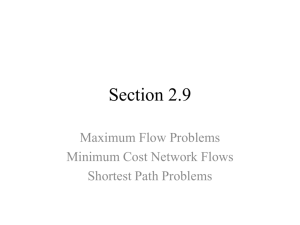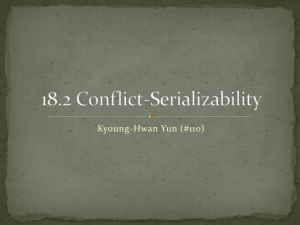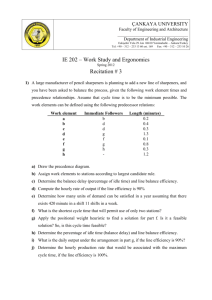Chapter 17
advertisement
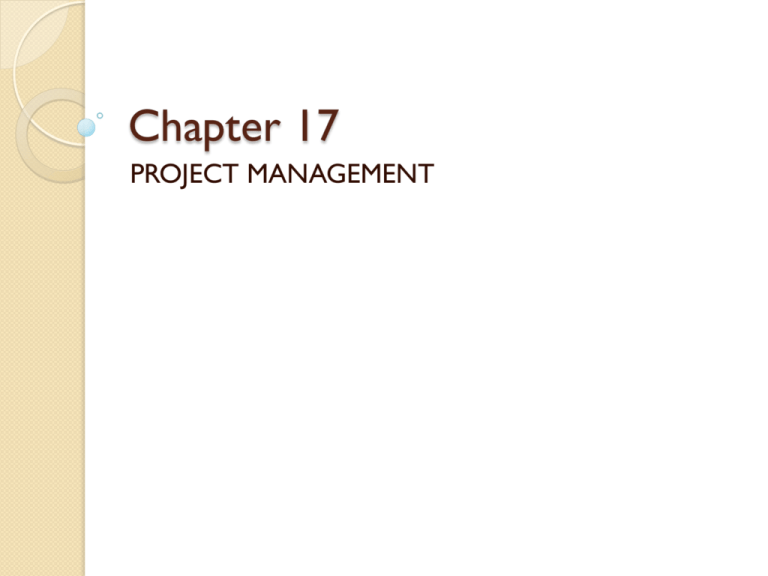
Chapter 17 PROJECT MANAGEMENT Introduction A project is a temporary endeavour undertaken to create a "unique" product or service Typically all projects can be broken down into: separate activities (tasks/jobs) - where each activity has an associated duration or completion time (i.e. the time from the start of the activity to its finish) precedence relationships - which govern the order in which we may perform the activities, e.g. in a project concerned with building a house the activity "erect all four walls" must be finished before the activity "put roof on" can start Any mistakes are costly to rectify It is concerned about performing the job tasks correctly it is temporary - it has a beginning and an end it is "unique" in some way “Production Management is repetitive in nature, whereas Project Management is more of a single, major job.” Examples Building a football stadium Administrating a large research contract Performing a major transplant surgery Establishing a production line Earning a college diploma Raising a child Etc…. Characteristics A project is comprised of many tasks or activities. The activities of a project has precedence relationship. Certain activities cannot be started until others have been completed. Each activity has a duration. The activities of a project must be scheduled. Types of project networks 1. 2. Activity on arc (AOA) project network, where each activity is represented by an arc. A node is used to seperate an activity from each of its immediate predecessors. The sequencing of the arcs shows the precedence relationship btw the activities. Activity on node (AON) project network , where each activity is represented by a node. Then the arcs are used just to show the precedence relationships that exist btw activities. A circle represents a node. The completion of all activities incoming to a node is considered an event, as is the start of the project. An arrow one of the activities of the project. A dashed arrow represents a dummy activity. Dummy activities are used to represent precedence relationships. Methods Gannt Chart Shows the time needed for activities as well as the earliest time when activities begin. CPM PERT- Critical Path Method Program Evaluation and Review Technique CPM and PERT The project consists of a set of well-defined activities or tasks which, upon completion, signify the end of the project. The activities may be started and stopped independently of each other within a given sequence. The activities have precedence relationship and must be performed in the proper order. A path through a project network is one of the routes following the arcs from START node to the FINISH node. The length of a path is the sum of the (estimated) durations of the activities on the path. Longest path through the network including the activites is called Critical Path Critical Path Method Critical path methods offer a number of advantages for project planing, scheduling and control. They encourage a logical approach to PM encourage long-range and detailed planning provide a standard method of communicating project plans, schedules and time performance. focus management attention on the usually small percentage of critical activities. can illustrate the effects of technical and procedural changes on the project schedule.


